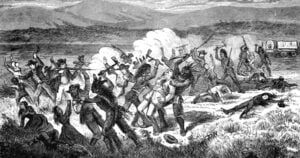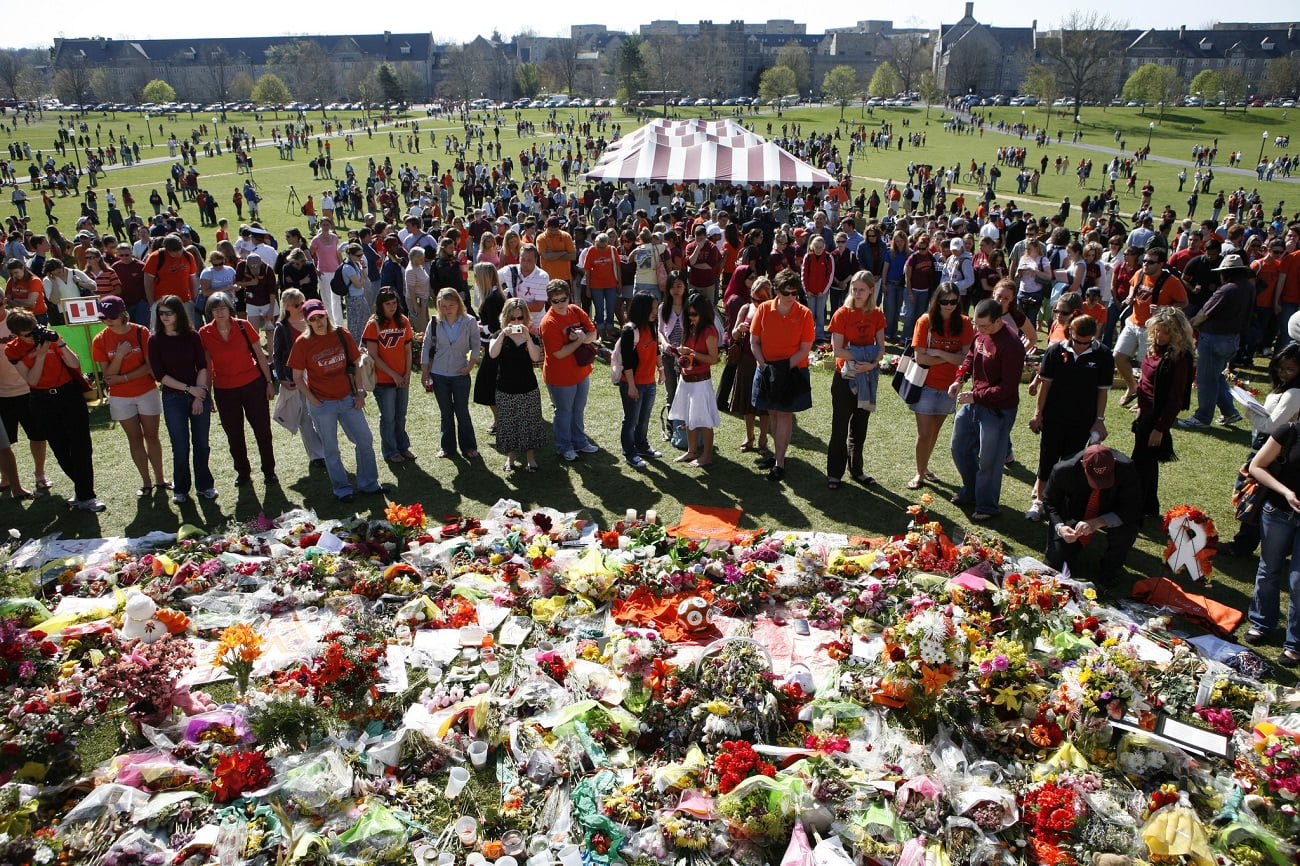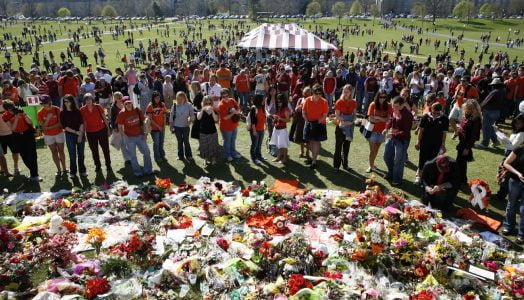The United States’ Congressional Research Service acknowledges that there is not a broadly accepted definition, and defines a “public mass shooting” as one in which four or more people selected indiscriminately, not including the perpetrator, are killed, echoing the FBI definition of mass murder. While mass killers generally have guns in their hands, another commonality is that they often have psychiatric drugs in their blood. The difference, though, is that it isn’t guns that have the side effect of “homicidal ideation.” If you develop digestive problems after a change in diet, do you look for the cause in foods you always ate or the new ones you started eating? While the answer is obvious, this common sense is painfully uncommon when analyzing the new phenomenon of continual mass shootings: Many blame the long-present “foods” — guns in this case — and ignore the new diet whose embrace coincided with the problem. And part of what’s new is the widespread use of psychiatric drugs.
As a case in point, the Parkland, Florida, shooter (I won’t use his name and help provide the fame he craved), who murdered 17 on Valentine’s Day, was on medication for emotional issues, his aunt related. This is now a familiar story, too. As WND.com’s David Kupelian put it, the following is par for the course: As information about a “perpetrator emerges, a relative confides to a newspaper that the ‘troubled youth’ who committed the mass murder was on psychiatric medications — you know, those powerful, little understood, mind-altering drugs with fearsome side effects including ‘suicidal ideation’ and even ‘homicidal ideation.’”
Yet, Kupelian laments, the media have little appetite for exploring this issue. Politicians don’t, either. Unlike with guns, legal drugs aren’t a sexy issue that can be used to scare people and win votes. Moreover, as The Guardian reported last year, “Pharmaceutical companies spend far more than any other industry to influence politicians,” having poured “close to $2.5bn into lobbying and funding members of Congress over the past decade.” This dwarfs the “gun lobby’s” political contributions, mind you.
But what about pharmaceuticals’ contributions to mass shootings? Of course, correlation doesn’t mean causation, but it can provide clues as to where causation may lie — and the correlation between mass shooters and psychiatric drug use certainly exists.
Consider Newtown, Connecticut, killer Adam Lanza (I will provide the names of perpetrators of older incidents), who killed 26 at Sandy Hook Elementary School in 2013. He also was on medication, according to family friend Louise Tambascio. That’s all we heard about it, however; as Kupelian points out, there “was little journalistic curiosity or follow-up.”
But there should be. As Kupelian also informs, “Fact: A disturbing number of perpetrators of school shootings and similar mass murders in our modern era were either on — or just recently coming off of — psychiatric medications.” He then provides some examples (all quotations are Kupelian’s):
- “Columbine mass-killer Eric Harris was taking Luvox — like Prozac, Paxil, Zoloft, Effexor and many others, a modern and widely prescribed type of antidepressant drug called selective serotonin reuptake inhibitors, or SSRIs.” Along with fellow student Dylan Klebold, Harris shot 13 to death and wounded 24 in a headline-grabbing 1999 rampage. “Luvox manufacturer Solvay Pharmaceuticals concedes that during short-term controlled clinical trials, 4 percent of children and youth taking Luvox — that’s one in 25 — developed mania, a dangerous and violence-prone mental derangement characterized by extreme excitement and delusion.”
- Twenty-five-year-old Patrick Purdy murdered five children and wounded 30 in a schoolyard shooting rampage in Stockton, California, in 1989. He’d been taking “Amitriptyline, an antidepressant, as well as the antipsychotic drug Thorazine.”
- “Kip Kinkel, 15, murdered his parents in 1998 and the next day went to his school, Thurston High in Springfield, Oregon, and opened fire on his classmates, killing two and wounding 22 others. He had been prescribed both Prozac and Ritalin.”
WND’s Leo Hohmann adds to the picture, having reported in 2015 (all quotations are his):
- “Aaron Ray Ybarra, 26, of Mountlake Terrace, Washington, allegedly opened fire with a shotgun at Seattle Pacific University in June 2014, killing one student and wounding two others.” Ybarra “said he’d been prescribed with Prozac and Risperdal to help him with his problems.”
- “Jose Reyes, the Nevada seventh-grader who went on a shooting rampage at his school in October 2013 was taking a prescription antidepressant [Prozac] at the time….”
- “Navy Yard shooter Aaron Alexis sprayed bullets at office workers and in a cafeteria on Sept. 16, 2013, killing 13 people including himself. Alexis had been prescribed [generic antidepressant] Trazodone by his Veterans Affairs doctor.”
- “In 1988, 31-year-old Laurie Dann went on a shooting rampage in a second-grade classroom in Winnetka, Ill., killing one child and wounding six. She had been taking the antidepressant Anafranil as well as Lithium, long used to treat mania.”
- “In Paducah, Kentucky, in late 1997, 14-year-old Michael Carneal, son of a prominent attorney, traveled to Heath High School and started shooting students in a prayer meeting taking place in the school’s lobby, killing three and leaving another paralyzed. Carneal reportedly was on Ritalin.”
- “In 2005, 16-year-old Jeff Weise, living on Minnesota’s Red Lake Indian Reservation, shot and killed nine people and wounded five others before killing himself. Weise had been taking Prozac.”
- “47-year-old Joseph T. Wesbecker, just a month after he began taking Prozac in 1989, shot 20 workers at Standard Gravure Corp. in Louisville, Kentucky, killing nine. Prozac-maker Eli Lilly later settled a lawsuit brought by survivors.”
And there are many, many more examples.
Of course, also relating to correlation, there’s a chicken-or-egg question here: Is it that taking psychiatric drugs makes a person more likely to go crazy and commit murderous rampages, or is it that crazy people who are candidates for committing murderous rampages are more likely to be prescribed psychiatric drugs? In reality, most likely it’s both.
The truth is that because the human mind is complex and not wholly understood, taking mind-altering drugs is a risky proposition. Drug companies acknowledge this, too, mind you — just not very publicly. As Kupelian writes after relating the case of Andrea Yates, who drowned her five children in 2001 while on the antidepressant Effexor:
In November 2005, more than four years after Yates drowned her children, Effexor manufacturer Wyeth Pharmaceuticals quietly added “homicidal ideation” to the drug’s list of “rare adverse events.” The Medical Accountability Network, a private nonprofit focused on medical ethics issues, publicly criticized Wyeth, saying Effexor’s “homicidal ideation” risk wasn’t well publicized and that Wyeth failed to send letters to doctors or issue warning labels announcing the change. And what exactly does “rare” mean in the phrase “rare adverse events”? The FDA defines it as occurring in less than one in 1,000 people. But since that same year 19.2 million prescriptions for Effexor were filled in the U.S., statistically that means thousands of Americans might experience “homicidal ideation” — murderous thoughts — as a result of taking just this one brand of antidepressant drug. Effexor is Wyeth’s best-selling drug, by the way, which in one recent year brought in over $3 billion in sales, accounting for almost a fifth of the company’s annual revenues.
Then, after mentioning the case of 12-year-old Paxil user Christopher Pittman’s murder of his grandparents, Kupelian informs that “Paxil’s known ‘adverse drug reactions’ — according to the drug’s FDA-approved label — include ‘mania,’ ‘insomnia,’ ‘anxiety,’ ‘agitation,’ ‘confusion,’ ‘amnesia,’ ‘depression,’ ‘paranoid reaction,’ ‘psychosis,’ ‘hostility,’ ‘delirium,’ ‘hallucinations,’ ‘abnormal thinking,’ ‘depersonalization’ and ‘lack of emotion,’ among others.”
In fact, as Ch 2 WCGH reported in 2009, “One study shows a quarter of all children on drugs such as Paxil and Zoloft become dangerously violent and/or suicidal.” Below is a 2011 news report on the subject by WCNC.COM 6 News; it includes the story of Christopher Pittman.
Of course, if these drugs pose such a threat, there should be a stream of high-profile lawsuits, right? Wrong. To avoid the bad exposure this would bring, drug companies spend hundreds of millions of dollars settling claims out of court and often cloak them with confidentiality agreements.
Having said this, it’s unlikely that psychiatric drugs are entirely to blame for mass shootings, for much has changed during the last many decades. We’ve seen a decline in faith and rise in moral relativism/nihilism, which relates the notion that right and wrong are mere “perspective”; entertainment has become increasingly decadent and mindlessly violent (note that the Internet’s rise fairly closely coincided with the start of continual mass shootings); the family has continued to break down, and Americans today, immersed in electronics, are often more connected to things than people; and the fame committing a massacre brings can be alluring to lonely, disturbed people, thus breeding copycat crimes, to name just a few factors. It’s a systemic problem.
Nonetheless, adding mind-altering drugs to this equation adds up to nothing good, and this brings me to my story. I knew a good-natured man who was the epitome of even-temperedness, who had some problems and was prescribed an antidepressant by a psychiatrist (who’d never treated him before). Well, he swallowed one pill — and only one, ever. In his case, that was all it took. Fifteen minutes later, he flew into a rage and was never the same again. Mental instability, irrationality, and some violent episodes — in a word, insanity — would define the rest of his life.
Famed psychiatrist Sigmund Freud once believed that cocaine, legal during his younger days, was the best cure for depression there’d ever been. “Bayer Heroin” was once advertised as a remedy for all sorts of ailments. Today, with one out of six Americans on some psychiatric medication, we ought to perhaps bear in mind that just because a drug is on the right side of the law doesn’t mean it won’t bring you to the wrong side of sanity’s line.
Source: The New American
For two years (2017-2019), The Violence Project has been studying the life histories of mass shooters in the United States for a project funded by the National Institute of Justice, the research arm of the U.S. Department of Justice. They’ve built a database dating back to 1966 of every mass shooter who shot and killed four or more people in a public place, and every shooting incident at schools, workplaces, and places of worship since 1999. They’ve interviewed incarcerated perpetrators and their families, shooting survivors and first responders. They’ve read media and social media, manifestos, suicide notes, trial transcripts and medical records.
Their goal has been to find new, data-driven pathways for preventing such shootings. Although they haven’t found that mass shooters are all alike, their data does reveal four commonalities among the perpetrators of nearly all the mass shootings they studied.
First, the vast majority of mass shooters in the study experienced early childhood trauma and exposure to violence at a young age. The nature of their exposure included parental suicide, physical or sexual abuse, neglect, domestic violence, and/or severe bullying. The trauma was often a precursor to mental health concerns, including depression, anxiety, thought disorders or suicidality.
Second, practically every mass shooter they studied had reached an identifiable crisis point in the weeks or months leading up to the shooting. These shooters often had become angry and despondent because of a specific grievance. For workplace shooters, a change in job status was frequently the trigger. For shooters in other contexts, relationship rejection or loss often played a role. Such crises were, in many cases, communicated to others through a marked change in behavior, an expression of suicidal thoughts or plans, or specific threats of violence.
Third, most of the shooters had studied the actions of other shooters and sought validation for their motives. People in crisis have always existed. But in the age of 24-hour rolling news and social media, there are scripts to follow that promise notoriety in death. Societal fear and fascination with mass shootings partly drives the motivation to commit them. Hence, as seen in the recent Dayton and El Paso incidents, mass shootings tend to come in clusters. They are socially contagious. Perpetrators study other perpetrators and model their acts after previous shootings. Many are radicalized online in their search for validation from others that their will to murder is justified.
Fourth, the shooters all had the means to carry out their plans. Once someone decides life is no longer worth living and that murdering others would be a proper revenge, only means and opportunity stand in the way of another mass shooting. Is an appropriate shooting site accessible? Can the would-be shooter obtain firearms? In 80% of school shootings, perpetrators got their weapons from family members, according to our data. Workplace shooters tended to use handguns they legally owned. Other public shooters were more likely to acquire them illegally.
NOTE: Of course they can obtain firearms. It’s our 2nd amendment right! Like psychiatric drugs, taking away their 2nd amendment right or that of those around them is a symptom fix that does little to solve the problem. The root of the problem is NOT the right to own or obtain a gun. It’s the pushing of psychiatric drugs by big pharma and psychiatrists for profit. It’s the evils of the social engineers of cultural Marxism who control the music industry and Hollywood that continuously bombard us with violence, hate, and immoral behavior. It’s the deep state controlled MSM and leftist politicians that continuously promote hate and violence while projecting it onto their political opponents. This study went back to 1966 because that’s when mass shootings began in America. Is it a coincidence that prayer was removed from public schools in 1962, Bible reading was removed from schools in 1963, and that mass shootings started soon after? Kids are falsely taught in schools evolution and other false theories that teaches we are here by chance and not the product of a creator? They are taught that killing babies is okay, abstinence is for religious fanatics and fornication is cool, as well as many other backwards erroneous teachings that have led us away from God and morality. Only a turn back to moral character in our homes, schools, and political figures will return us to safer communities and a safer world, but Satan and his minions work hard to prevent it.
Atheist Mass Shooters
Recent increases in tragic mass murders perpetrated by young individuals have prompted questions about their rationale for doing so. Conservapedia provides evidence that their motives have been overwhelmingly from deteriorating social conditions in their personal lives. For example, they are increasingly atheistic or liberal, or driven by hatred of God. Virtually all of these killers are the product of public schools and most were big video game players. Many of these murders fit the observation by the forensic psychiatrist Dr. Michael Welner about the Connecticut massacre: “This was a crime that was more than a mass shooting. He killed these people like an arcade game.” Many were recreational marijuana users also.
The FBI has performed some preliminary research on the psychology of mass shooters: FBI on psychology of mass shooters and FBI Study Identifies Warning Signs Of Future Mass Shooters.
There have been a significant amount of atheists who have been mass shooters (see: List of atheist shooters and serial killers).
John Stott in his 2018 Daily Caller article entitled What Is The Religion Of Mass Public Shooters? wrote:
Just 16 percent have any type of religious affiliation at the time of their attacks, with a slight majority of those being Muslims.
Over just over 20 years from the beginning of January 1998 through today, there have been 69 killers committing 66 mass public shootings in the United States where at least four people have been killed. Of those attacks, just four have been identified as Christians, with just three clearly regular churchgoers. With 70 percent of Americans identifying themselves as Christians and over 33 percent going to church at least once a week, those numbers are a long way away from the 48 or 23 we would respectively expect.
Everyone else was either explicitly identified as no religious affiliation or that family and friends could not identify them as religious.
False Flag Mass Shootings
The globalist think tanks have determined fear is the most effective motive for the people to yield over their constitutional rights and liberty, so they plan and execute events that not only terrorize us but also are also intended to remove our rights… especially gun rights. The globalists cannot seize power in the US until they confiscate the more than 350,000,000 guns held by the American Republic.
There’s no better way to distract the people than to terrorize them. Random, senseless violent terror attacks such as mass shootings are perhaps the most effective way to pull the populace into a space of fear and anxiety. Many 2nd amendment advocates begin to support the becon call of the controlled mainstream media in a collaborated 1-2 punch effort to ban assault rifles.
All false flag shooting events are planned in gun free zones where they cannot be prevented by legally armed citizens. These events typically take place simultaneously with a scheduled drill as do most large scale false flags such as 9/11 where nearly 50 known drills were planned to confuse, displace, and distract government and military officials from reacting.
Mass shootings prevented by armed citizens
See also: http://freedom-articles.toolsforfreedom.com/mass-shootings-drugs-violence-mind-control/
Chronological History of Mass Shootings

14 Yr Old Asa Coon was on Antidepressants when He Shot 5, Including Himself, at His Cleveland, OH school

The Red Lake Shootings: Jeffrey Weise, on Prozac, Kills Grandfather and Companion, then Goes to Red Lake Senior HS, Shooting 12, Killing 8 More Including Himself

Columbine School Shootings in Colorado. Was it a False Flag with Government Foreknowledge and Assistance?
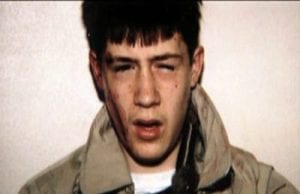
Thurston High School Shooting: Kip Kinkel, on Prozac and Ritalin (also Claimed to have a Chip Implant) Kills Parents, then Shoots 27 at his School

The Westside Middle School Shootings in Jonesboro, Arkansas by 2 kids on Ritalin Killing 5 & Wounding 10 More
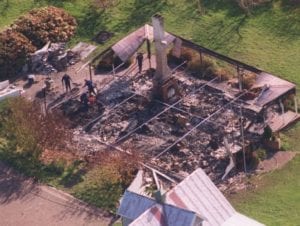
Port Arthur Massacre: A Planned Event Designed to Disarm the Australian Public

Dunblane Primary School Shootings near Stirling, Scotland: A False Flag used to Further Gun Control in the UK

47-Year Old Joseph Wesbecker Shot 20 Workers, Killing 8, in a Kentucky Factory After He was on Prozac for 1 Month
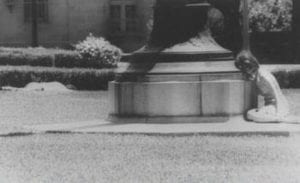
First Mass School Shooting in America Occurs at the Univ. of Texas by 25yo Engineering Student Charles Whitman Killing 17
